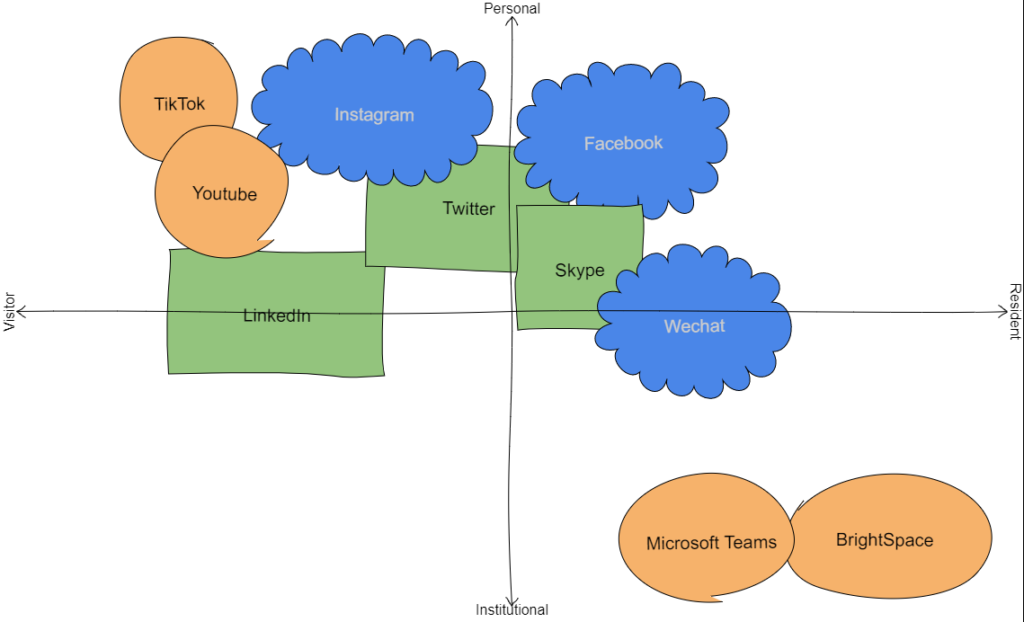Consider how you would curate your social media with a critical public audience.
When there is a specific audience, it is essential to personalize it to their liking and the situtational context. For example, if I knew that my audience would be my potential employer, I would curate my social media so that it exemplifies the attributes and values that their organization holds. For example, I would post about my work and achievements, healthy activities such as hiking and gold, trying new things, making motivational posts. On the other hand, if it were for an important official, I would definitely use more formal words, supportive posts, and overall more respect and censorship in my social media.
Identify the risks and benefits of engaging with a public audience in a media space – what are the risks for a public figure or person in a position of trust (educator, lawyer, government official)?
I think this is something we see a lot in public. For famous persons, especially those who hold power in the country and world, everything that the public figure posts and does is in the public eye. Hence, when they hold important influence towards the public, it is crucial that they are, or deemed as, positive, trustworthy, credible, and professional. For these individuals, the risks of engaging with a public audience is that they are constantly under the public eye and most cannot afford to make mistakes. For example, for a lawyer or government official, if they were caught doing something unethical or avoiding a crucial situation, they would be deemed as unreliable and irresponsible by the public – traits that are disliked by the public in a position of power. A notable example would be Canadian politicians caught traveling over the holidays during the pandemic. Especially when travelling restrictions were in place and many officials were posting on social media to avoid traveling. Upon discovering that politicians were traveling during this time, they faced heavy backlash from the public, some forced to resign from their positions.
On the other hand, the benefits of engaging with a public audience include receiving feedback from the public and having public influence. Using the same example of politicians during the pandemic, policies and announcements were sometimes adjusted according to the public opinion and with politicians and the regular updates by the Prime Minister, the public were more compliant to COVID social restrictions. Especially when Bonnie Henry, a Canadian physician and provincial health officer of BC spoke about the pandemic and how to control it. This greatly helped in controlling the pandemic.
Consider how to best address negative replies and critiques reflective of your personal values and employer social media policy?
I think all feedback, whether they agree or disagree with your own values should be taken into consideration. Consider why are there negative replies and critiques – consider the opposing side’s opinions and perspective. In the case that you still hold strong to your values, I think the best way to address it is to acknowledge the opinion, thank them for it, but then hold your stance and tell them why you have these values. Sometimes, if your own personal values are not in line with the employer social media policy, I would say to consider an alternative organization to join – mainly because it means that your personal values are not in line with the organization’s and vice versa. Hence, not only world perspective be a possible issue that may arise in the work place, but this may also cause future issues when making decisions and during discussions in the workplace.
Open dialogues about media literacy and factual information can create conflict, why does this happen?
I think conflict occurs in open dialogues about media literacy and factual information because sometimes, the source of the content is subjective to the write. What the writer may think is unbiased may include unintentional biases and be primed with biased words. At a young age, we are taught at school to be aware of biases in the media and learn to distinguish it – decide what is biased and unbiased. However, because media literacy is written by a human being, like mentioned previously, it incorporates a portion of opinion into it, regardless of it is backed up by statistics and facts. Furthermore, the case of confirmation bias may also occur. Although there is proven statistics on one topic, the media literacy may not have included factual information on the opposing side. Hence, this may spark conflict when another party has contradicting information about the same topic.
What is the benefit of having a PLN that values media literacy?
Media literacy encourages individuals to question, critically evaluate and understand the content. It also encourages individuals to share media sources responsibly. The benefit of having a PLN that values media literacy is that the PLN will not only have reliable sources with real and valid information, when there are additional entities that are open and critically comment on it, it helps to stimulate our critical thinking on the topic, which turns learning not only more engaging but also more interested.
References
Miller. (2021). EDCI 338 – MEDIA LITERACY with JULIE SMITH . Youtube. Retrieved from (46) EDCI 338 – MEDIA LITERACY with JULIE SMITH – YouTube
Miller (2021). Jody Vance – Media Voices . Youtube. Retrieved from (46) Jody Vance – Media Voices – YouTube



Recent Comments